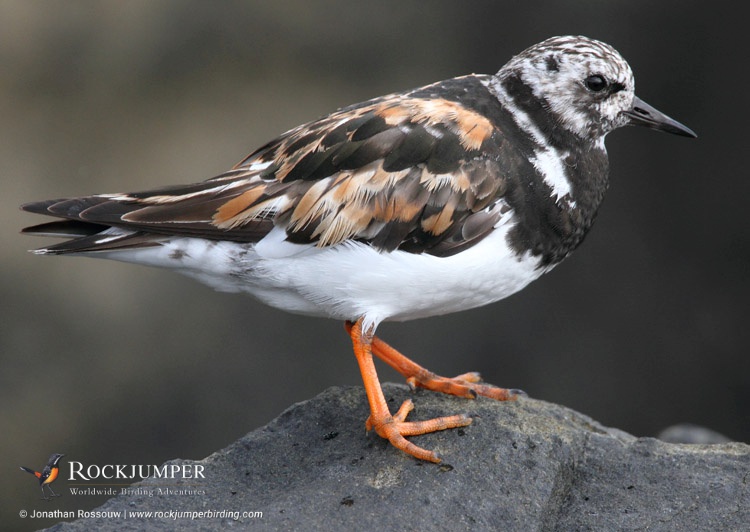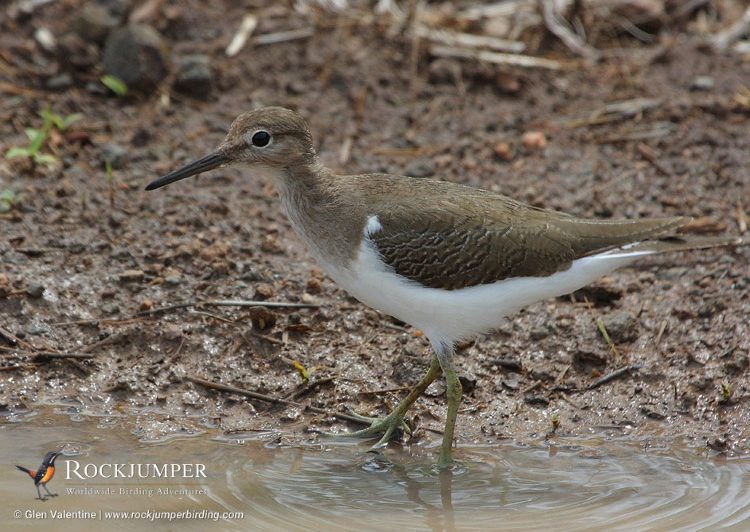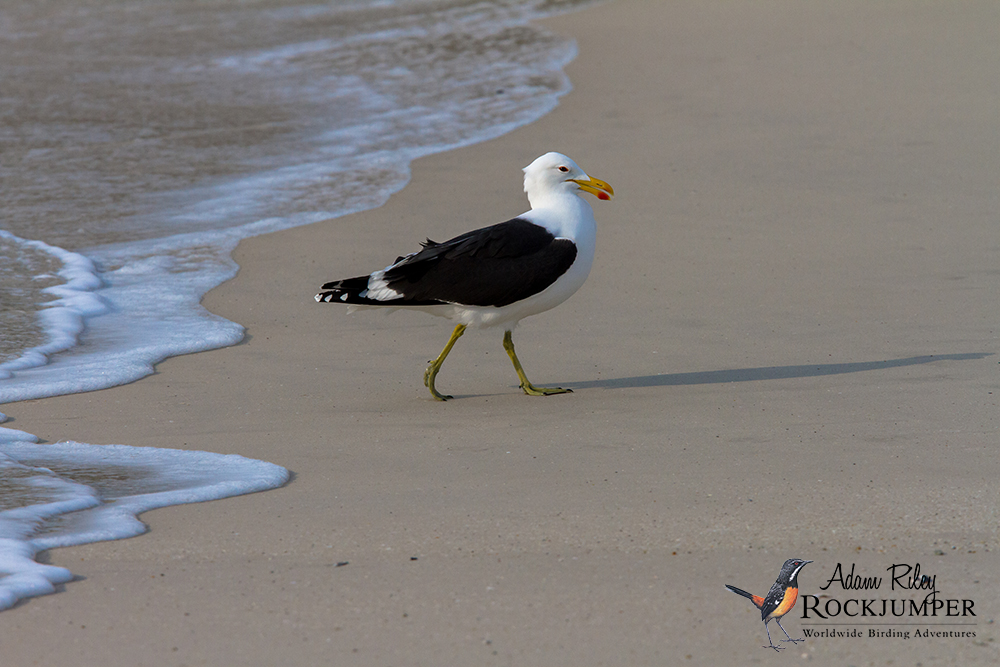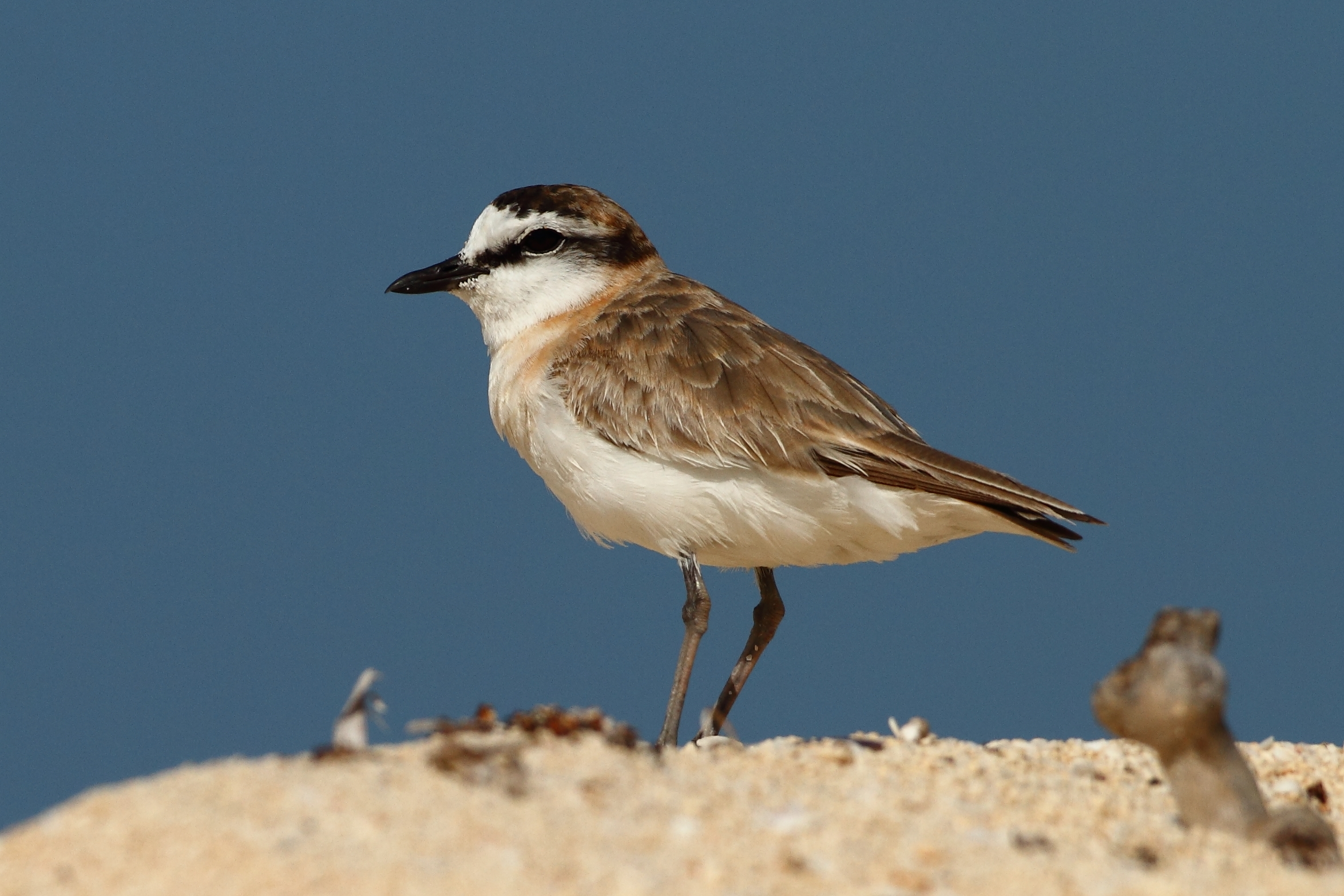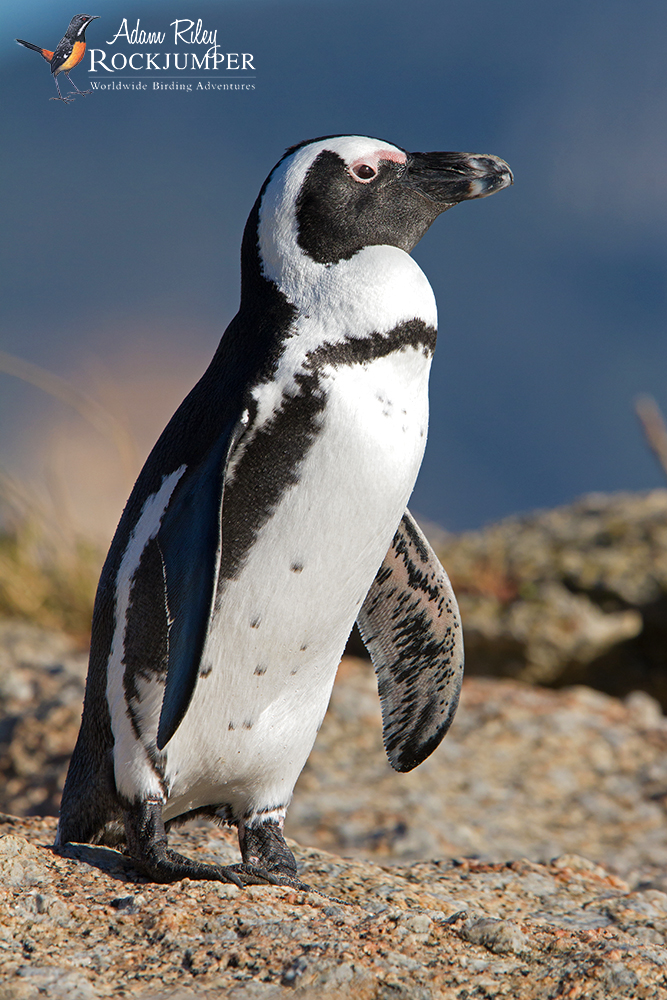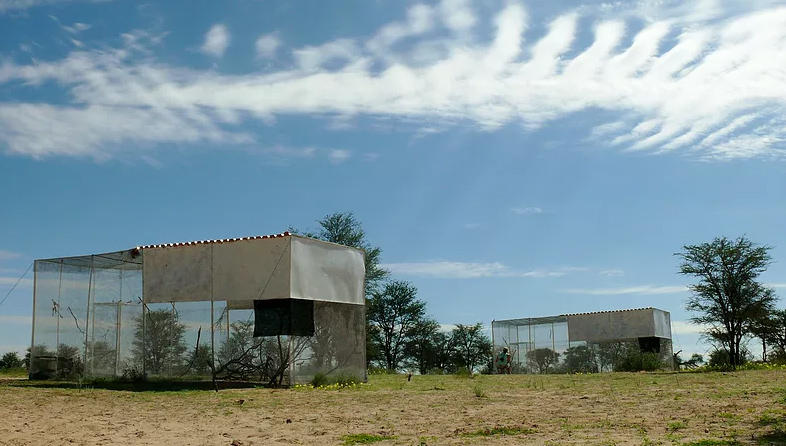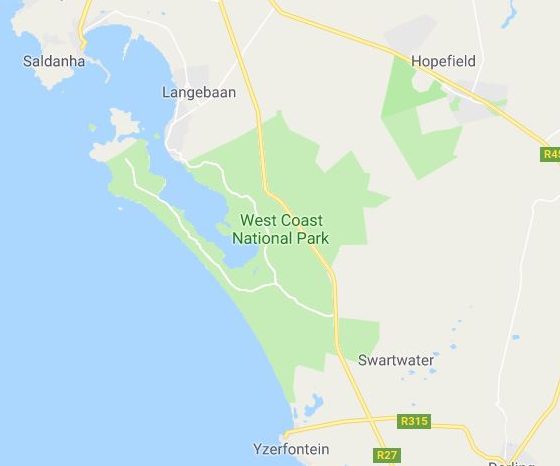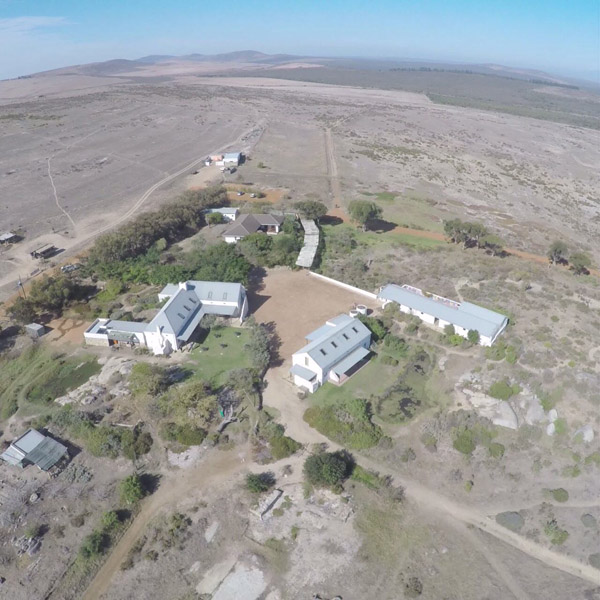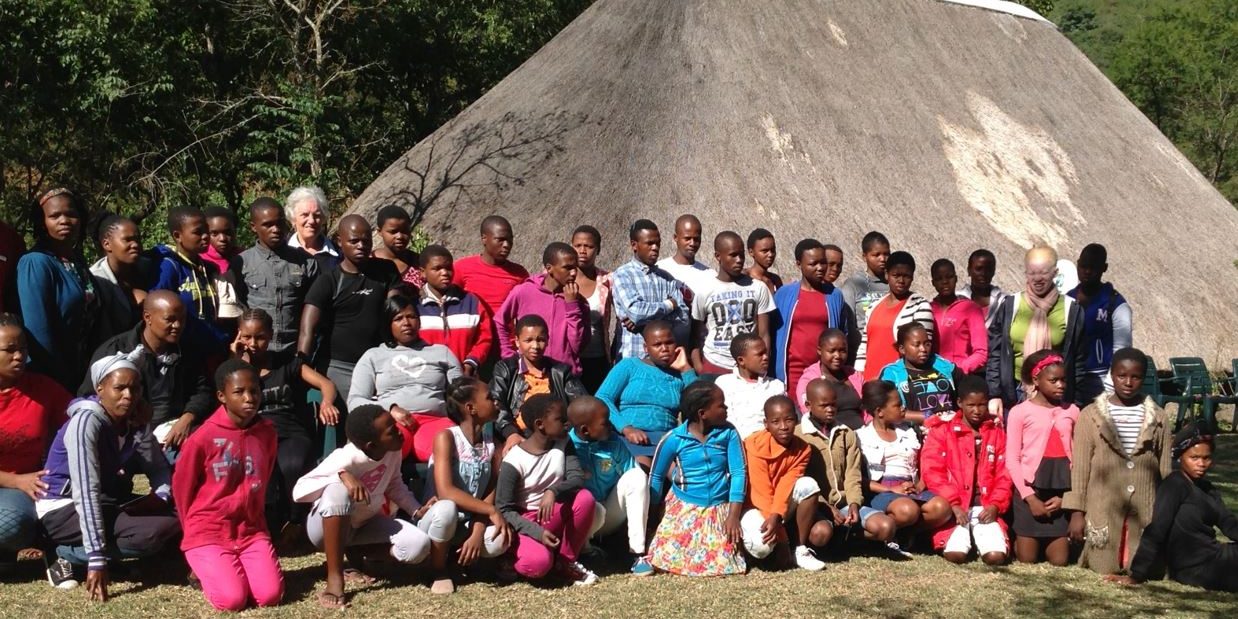
Readers of our newsletters may remember Nomusa Mkhungo from the Women’s Leadership Training Programme (WLTP). Rockjumper had the opportunity to support Nomusa on her way to the International Hornbill Conference in Malaysia last year, where she delivered a presentation on her work in community development and hornbill conservation. You can read more about it here.
Earlier this year, Rockjumper had another opportunity to support WLTP as they sent six delegates (including Nomusa) to BirdLife South Africa’s (BLSA) annual conference “Flock on the West Coast” in Langebaan from 6-11 March 2018. Highlights of their experience included a course in waders, many lifers, and the first time on a plane for some of the ladies in the group!
“We got to learn a lot from all the presentations done during the “Learning About Birds” (LAB) seminars. One of our members did a presentation on “Birding is not for the Birds” and we won the prize for the best speed presentation. It was a 5-minute presentation and it grabbed the audience’s attention.
“The support we get from generous people like you has helped us to sustain our birding project during a time when we are struggling for funds. Last year you gave me the opportunity to present our work on Southern Ground Hornbills in Malaysia and I came back with many valuable experiences to share with our members”, said Nomusa (28).
Here is Nomusa’s account of their time in Langebaan:
On arrival
When we arrived at Langebaan, we went straight to the conference centre to attend a course on waders, led by Faansie Peacock. One of the exercises was to identify with our neighbour as many waders as we could. The second exercise was to identify their bills. It wasn’t an easy exercise to do but we were able to identify a few, for example the Grey Plover, African Black Oystercatcher and Common Sandpiper. We were ready to practice what Faansie had taught us.
Our first outing at Langebaan
We left early the next morning for the West Coast National Park surrounding the beautiful Langebaan Lagoon and the stunning bird hides. One has to be at the hides as close to low tide as possible so that there is sand for waders to display themselves as they forage.
We got many lifers: Lesser and Greater Flamingos, African Black Oystercatcher, White-fronted, Three-banded and Grey Plovers, Little Stint, Whimbrel, Ruff, Sanderling, Ruddy Turnstones at the hides, and Ostriches, Bontebok, and Eland in the Park.
We remembered Faansies’s rhyme to distinguish between the stints: “If the legs are black check the cracks, if the legs are yellow, you’re a lucky fellow.” The rare Temminck’s and Long-toed Stints have yellow legs, the Little Stint has black legs, but check the cracks in the mud that cakes the legs to see the real leg colour.
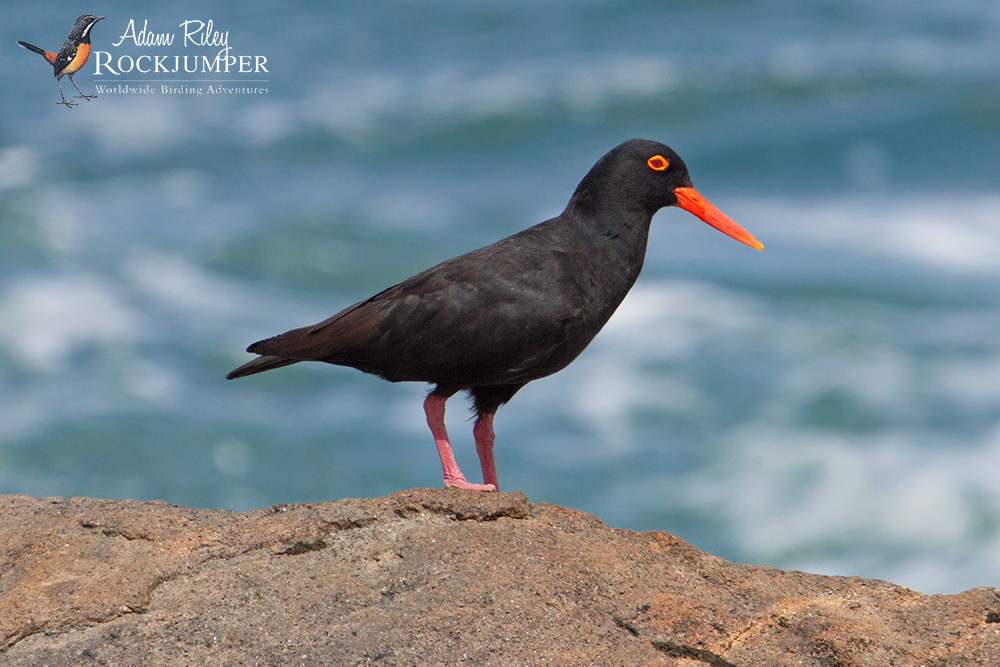
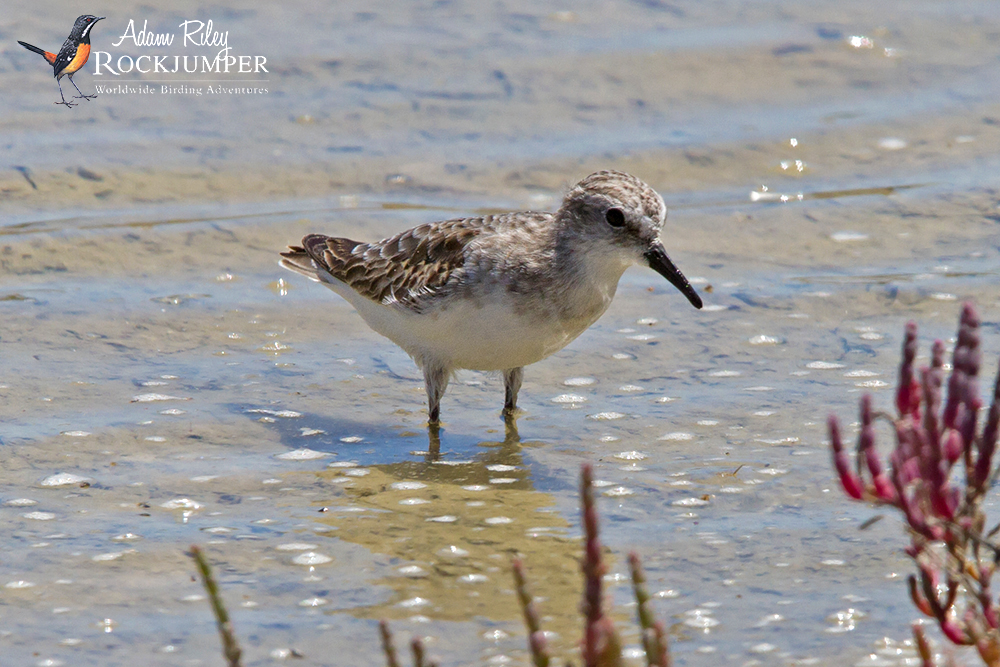
Highlights from the Learning About Birds (LAB) Seminar
We spent the next two days choosing from forty-eight 5, 15, or 30-minute presentations in the science “LAB” and Layman’s “LAB”! Some presentations stood out for us. We have selected a few to highlight below:
1. Where have all the Waders gone?
Dale reported that Common Sandpiper, Wood Sandpiper, Curlew Sandpiper, Little Stint and Ruddy Turnstone have declined significantly. Among resident waders, White-fronted Plovers declined by 22%. The good news is that African Oystercatchers increased by 166%.
Migratory waders visit our shores each summer, to forage in the rich habitats of lagoons, estuaries, beaches and waste-water treatment works. BLSA did research around our coastline, assisted by the Cape Bird Club who did monthly bird counts at the False Bay Nature Reserve (Strandfontein) in Cape Town.
2. Share the Shores
Tourism creates jobs and is good for the economy, but it can be bad for birds. Every summer, residents and visitors flock to the Plettenberg Bay beaches, bringing their dogs with them. At the same time bird species like African Black Oystercatcher and White-fronted Plover pair up and breed on the same beaches.
The Nature’s Valley Trust investigated how people and dogs affect the breeding performance of Kelp Gulls, Black Oystercatchers and the White-fronted Plover. For example, when birds are chased off their nests, there is a risk that their eggs will cook in the heat. The task of a nesting bird is to keep the eggs at the correct temperature.
They then implemented innovative mitigation methods, together with high-impact education and awareness programmes, also using social media. There is an increase in the breeding success of these birds. Mark recommends that similar work should be done all along the coastline.
We need win-win solutions so that all creatures can enjoy the beaches!
3. African Penguin Conservation: Taking the Fish to the Penguins and the Penguins to the Fish
The African Penguin is endangered. Once numbering in the millions, the population has dropped by a staggering 80%, to fewer than 18 000 pairs in South Africa. A lack of food is the biggest threat. Penguins eat mainly sardines and anchovies, but the distribution of these fish has shifted from the West Coast to the Cape South Coast because of overfishing around the West Coast colonies.
BLSA is assisting penguins to move to where there is more fish, by creating new colonies in De Hoop Nature Reserve and Plettenberg Bay.
4. Why Key Biodiversity Areas (KBAs) are Important for Birds
There are 168 KBAs at present. KBAs are an initiative to encourage collaboration amongst people working on the conservation of different taxa (biological species) and ecosystems.
KBAs are IUCN-recognised “sites contributing significantly to the global persistence of biodiversity” in terrestrial, freshwater and marine ecosystems.
The categories to qualify as a KBA are: threatened biodiversity, geographically restricted biodiversity, ecological integrity, biological processes, and irreplaceability. A partnership project between BirdLife South Africa and the South African National Biodiversity Institute (SANBI) will soon reassess the 168 KBAs and may propose new ones.
South Africa has mega-biodiversity. Its ornithological experts, biologists, botanists, herpetologists, entomologists, etc. and civil society must pool knowledge to identify new sites. The global KBA Programme has the full backing of 12 of the largest global conservation NGOs, like WWF, Conservation International, and the Rainforest Trust. KBAs pack a powerful punch and provide benefits for countries including: global financial investment for the conservation of these sites, protected area and conservation area expansion and safeguarding of KBAs.
WLTP has published a manual on re-wilding. We are on the right track. We must be proactive where we are in Hlokozi and Centocow. We need to link up with groups and individuals with expertise to assist us in establishing KBAs in our areas. This could be achieved through support from other organisations/companies or the Government.
5. Hot Birds: Our Birdlife and Climate Change
The presentations on climate change were eye-openers. “Hot Birds” was one of several. We had to think beyond the human species in relation to its effects. In arid zones, birds are very vulnerable to the impacts of higher temperatures.
The Hot Birds Project is a collaborative research programme at the Percy Fitzpatrick Institute and the University of Pretoria, and has been going for more than 50 years. The project also collaborates with projects in the deserts of the USA. Climate Change brings more frequent and intense heatwaves and shifts in rainfall patterns. 40 degrees Celsius is a significant temperature threshold for birds. Andrew found that 48 birds died when the temperature was at 48 degrees Celsius. More frequent heat will reduce the likelihood of birds remaining in very hot areas. A bird that is under threat in the “Hotting” fynbos of the Western Cape is the Cape Sugarbird.
We learnt that birds keep cool by: reducing activity, choosing cool and sheltered habitat, using water to cool themselves, and panting. But the negative consequences of these activities are: sheltered habitat has unknown predators, less time to look for food which leads to poorer adult body condition, hungry nestlings, panting leads to dehydration and possible death and ultimately a decrease in bird populations.
Andrew gave us a take-home message: The earth is getting warmer. What are YOU doing to prevent climate change and save our bird species?
6. Birding is NOT for the birds!
To our surprise and delight, Ntuh won the prize for the best 5-minute Speed Presentation. (You can download the presentation here).
Visit to the West Coast National Park (WCNP)
We did other things besides attending the LAB seminars, and met some of the indigenous people living in the area. Eddie Papier was our guide. He grew up in what is now the West Coast National Park. His family and other families were removed during Apartheid to a township of Langebaan. The land was divided and sold to seven farmers.
Eddie explained how the WCNP became a park. Farming was stopped in 1966. The farmers formed an association and sold the land to SANParks. The land was restocked with game and in 1969 it was proclaimed a Nature Reserve. The West Coast National Park was proclaimed in 1985. Eddie was asked to compile the lagoon place names and a short history. While he was guiding us, he shared his childhood memories and experiences showing us where his family homestead had been. We were lucky to have him as our guide because he knows the place very well.
Nqobile Masuku’s (39) reflection on Eddie’s experience:
“I was not around during the time of forced removals in SA, so I feel less pain than those who experienced it, but I got a taste of how it feels to be removed from where you belong and to have to start a new life that has no meaning. It affects a person’s dignity and leaves unhealed pain and wounds. I felt so sad to hear how they had been removed. It was really amazing to find how committed Eddie was to the Park, despite that.
“It awakened in me a desire to find out more history from the elders who are still around. It will be very sad if they die before their information is written. I feel that when we listen to old people, it brings them peace. It is a way of exhaling the pain they have buried inside them. I reflected on our reality today, where old people are left alone while others watch TV or ignore them while they are busy with their cell-phones. I tried to listen and chase all my thoughts as if I was in our guide’s shoes.”[/dt_quote]
Visit to !Khwa ttu (San Bushmen Education Centre)
We learned a great deal and enjoyed our visit here. Making use of a former farmland, !Khwa ttu is a reconstructed experience of how San people lived in the past. The people who run the venture are all members of various San tribes and speak San languages. They share their knowledge of how to live simply and sustainably for a better future for all. The San had strong beliefs related to using the environment sustainably. Hunters had to learn from the elders and they did not hunt female animals or hunt every day. They ate a variety of food and moved to other areas so that plants could recover.
San youth from other regions live and work there giving tourists and others a San experience. It provides meaningful work for about 20 people while at the same time helping the youth reclaim their identity. The guides were very good and explained everything well so that we followed easily. There is an excellent museum, a restaurant, a bird hide and simple accommodation. The project is sponsored by a Swiss organisation.
It was so sad to hear that the SA Government does not support the centre while there is so much talk about land reclamation. The San are honoured on the Coat of Arms, but they are not sufficiently recognised. There is no official San language.
In conclusion
We were able to mix easily with other birders who were amazed to see young birders at a scientific conference. Many older birders engaged well with the girls asking how they had developed their interest in birding. They were encouraged that their work was inspiring such young people. One woman told Amanda, “You must try to find a career in birding because I can see that you are really passionate about birds. There are lecturers here from different universities so take this chance to talk to them.”
We learned from birders about their research. It gave us a platform to talk about our work to others. Even though we are not experts, we stood out. We were affirmed that our project is really important as it gave people from rural areas the chance to pass their environmental knowledge on to young people and it keeps the indigenous knowledge about birds going forward to the next generation.
